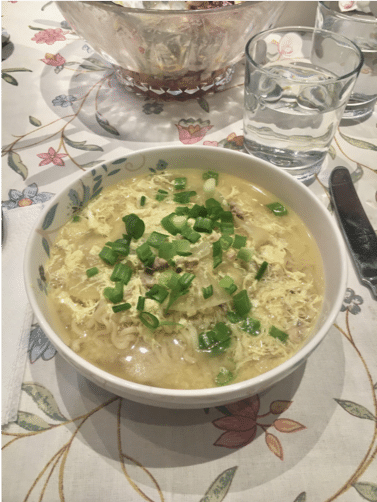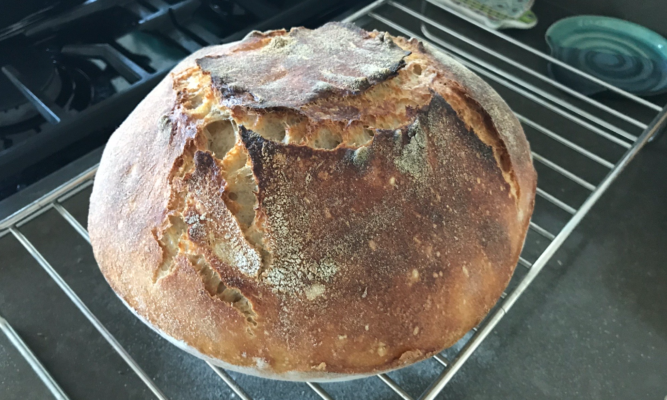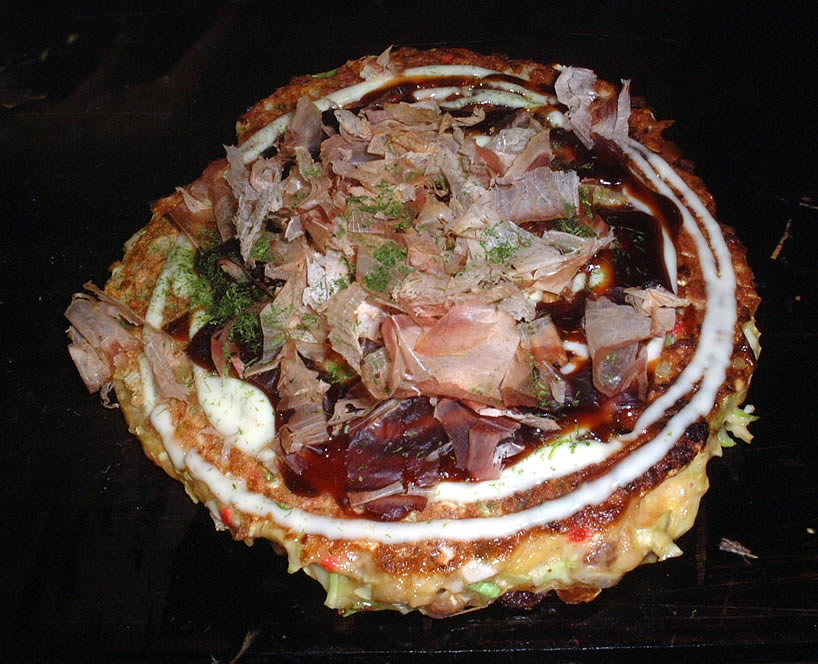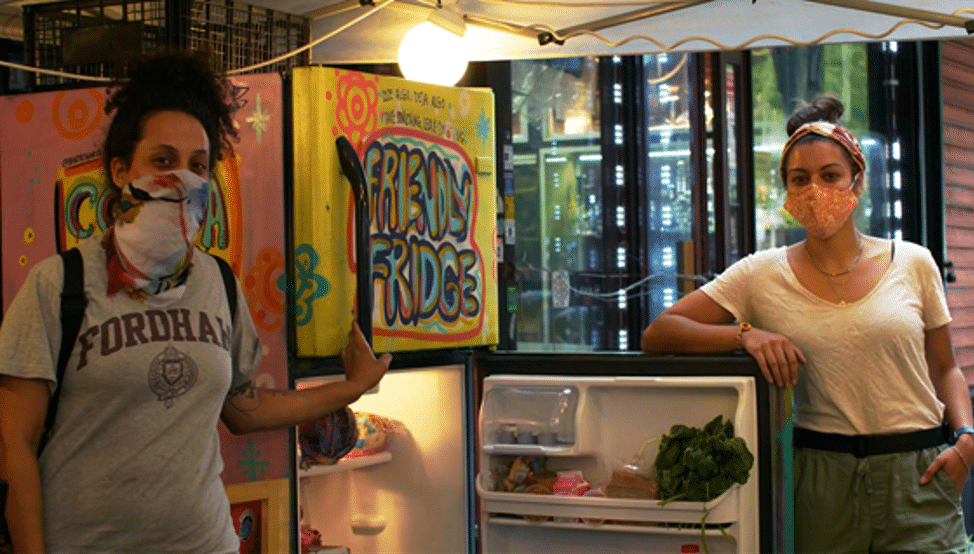Okonomiyaki Kansai with Nori, photo by Suguri_F. Courtesy Wikimedia, Creative Commons License.
#Sourdough. #BananaBread. #CookingInQuarantine. These hashtags popping up on Instagram give people an opportunity to show off what they’ve been cooking since the coronavirus pandemic sent them home to isolate. In one recent survey, 54 percent of respondents said they cook more than before the pandemic, and 51 percent said they will continue to cook after the crisis ends.
One swipe through your Instagram explore page and you’ll find people jumping on the cooking trend. “I’ve definitely been cooking more,” Maeve Woollen texted. “It’s the highlight of my day and also the only way I keep track of time passing.”
My family and I have benefited from this newfound passion for food. My boyfriend Kainoa Presbitero is staying with us during the quarantine and he experiments every day. “I love trying out new recipes. I think food is a great way to stay connected to my Japanese roots. Some of my favorites to make are okonomiyaki, a savory pancake with cabbage, and egg drop ramen.”

When you scroll further down your Instagram feed, you’ll notice sourdough bread stands out as a favorite. Retired CDC epidemiologist, Phil Graitcer, began baking sourdough bread before the pandemic at his home on St. Simon’s Island, Georgia. But he says this new free time allows him to experiment and make things more regularly with the sourdough starter.

He’s made bread with olives, bread with walnuts, and bread with sesame seeds. He likes that he’s been given a chance “…to explore rather than just make bread to eat.” Phil and his wife have ordered pickup from local restaurants a few times, but he says, “The excitement and value of going out is gone. There’s no longer the anticipation of dressing up, going out to dinner, and waiting to be seated. Supporting local restaurants now isn’t so fulfilling since it’s just as good as food that you eat at your house.”
Not everyone finds joy in cooking even if they have nothing else to do. Marilyn Applebaum in Park Slope, Brooklyn, still thinks it’s a chore. She said she’s tired of making the same dozen meals but she and her wife Frannie are more willing to eat the same thing. “I try to cook meals that I don’t mind eating two nights in a row or for lunch the following day,” she explained.
Their daughter Zoe, a student at Smith College, is now back home. She likes variety and often wants to order something in. Marilyn said it’s more costly to order delivery so they don’t do it on a regular basis even if they’d like to support local restaurants. She holds her family to strict social distancing rules and doesn’t “. . . foresee sitting in restaurants for a long time.” When they do order takeout she thoroughly cleans all the containers.
But with her schedule of grocery shopping only two times a week and avoiding the usually crowded stores, creating new meals for Zoe gets difficult. “Previous to COVID-19 I bought food fresh on a daily basis and didn’t store meats in the freezer,” Marilyn said. “I’d go up and down aisles and take my time thinking about what we need. I would rarely buy anything frozen. Now I think about food constantly and check what I have stored in the pantry and freezer. Since I have to defrost foods for dinner I have to plan and ask my family what they may want tomorrow.” Maybe Marilyn will be part of the 51 percent of people that will continue to cook once the crisis ends, but she might not do it willingly.
Tags: CCNY City College Journalism cooking Coronavirus COVID-19 family Flora Lennihan quarantine stay at home






